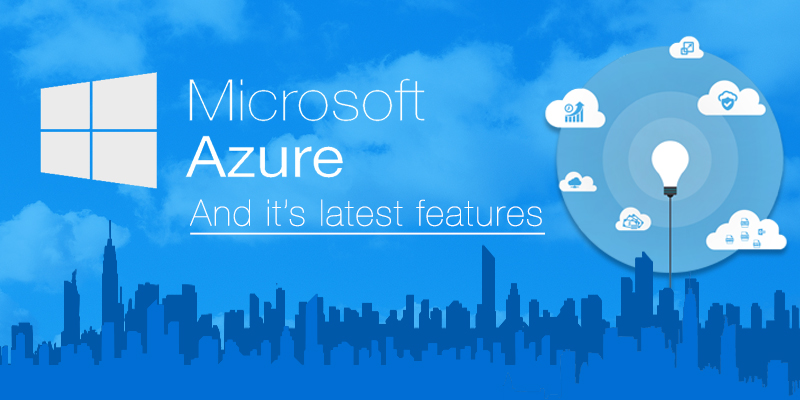
What You Should Know About Microsoft Azure and Its Latest Features
The cloud has become the latest trend and it is successfully redefining the ways organizations are doing their business. People, who are not taking the advantage of cloud services, especially in their IT environments, are sure to lose cost benefits, greater accessibility, scalability, reliability and other competitive advantages.
Windows Azure is a cloud computing infrastructure that helps in creating, deploying and managing various applications through the global network of data centers that are managed by Microsoft. The service allows companies to host their applications in the Cloud environment so that they don’t have to purchase or even manage their own servers.
The Problem of Managing Own Servers:
When business owners purchase their own servers at their own location, they try to measure the computing power and capacity that their organization will require. Unable to accurately identify the capacity, they may purchase too much and not make use of the resource, or they may even need to purchase additional servers so as to meet their storage and power. Companies that run their own servers are always responsible for the administration and management of their servers when they need to upgrade or maintain or even if they face technical problems.
Some Benefits of Windows Azure:
Cost savings and scalability: With Windows Azure, business organizations need to pay only for the resources that they are using. In case the company needs to increase its data storage power, then Microsoft can easily make it scalable and convenient and also adjust their rates thereby saving a significant amount of money. It is the “pay as you go” approach that allows organizations to pay only for the space that they are using instead of having to pay for the empty storage that they may never use.
Reliability: Another major advantage of Windows Azure is the reliability factor. The services are offered from cloud data centers and that has multiple built in redundancies. In case if one server crashes, then the company’s application will run on any other server located in the data center.
Easy upgradation: Microsoft Azure offers various different programming languages, frameworks, tools that include Microsoft specific and third party software and systems. This makes new web apps and upgrades to be done very easily.
Microsoft has always been busy keeping Azure updated with new and latest features. Public cloud services are always in constant mutation where new features are added while revising the old ones and even revamping the pricing structure so as to stay ahead of the competition and give the customers incentive to continue using. Microsoft’s Azure improvements have always been incremental and the changes are aimed at a specific subset of users. Several new features and functionalities have come up that are of great interest to the variety of Azure users.
Some Latest Features:
Shift to Azure Resource Manager: Over the past few years, Azure has worked on the platform’s clumsiness. Now the outages are few and there have been great improvements to the underlying networking, automation, patching and the latency has also been addressed with great improvements. The shift to Azure Resource Manager was also a great interface upgrade that has helped customers to manage their environments. Some other improvements around the lifecycle management include the Azure usage, Azure Monitor, Application Insights and Billing Portal.
Micro services: Azure has moved towards micro services and is away from virtual machines. Microsoft has expanded the Azure features around the containers while developing more on the functions of Azure.
More variety on Azure: Microsoft has embraced openness and Azure is the best example. Red Hat Enterprise Linux is available and the container service offers support for all the major container tools. Two new VM groups were added: the F-Series and the GPU based N-Series with a focus on price performance. There are also upgrades to Azure security center that address advanced threat detection, centralized security management and web application firewalls.
Azure stack: It is very important to mention the advancements made in Azure stack, the service that actually brings the public cloud capabilities on-premises. This improvement was delayed and users have also raised concerns about the restrictions of the product to specific hardware. It is now expected to be available sometime in the year 2017.
“Choosing a proper cloud vendor is very important for enterprises and Azure offers an array of beneficial features that are very important for any cloud strategy. Enterprises have witnessed great business growth by migrating to it and today it is considered to be a good choice.”